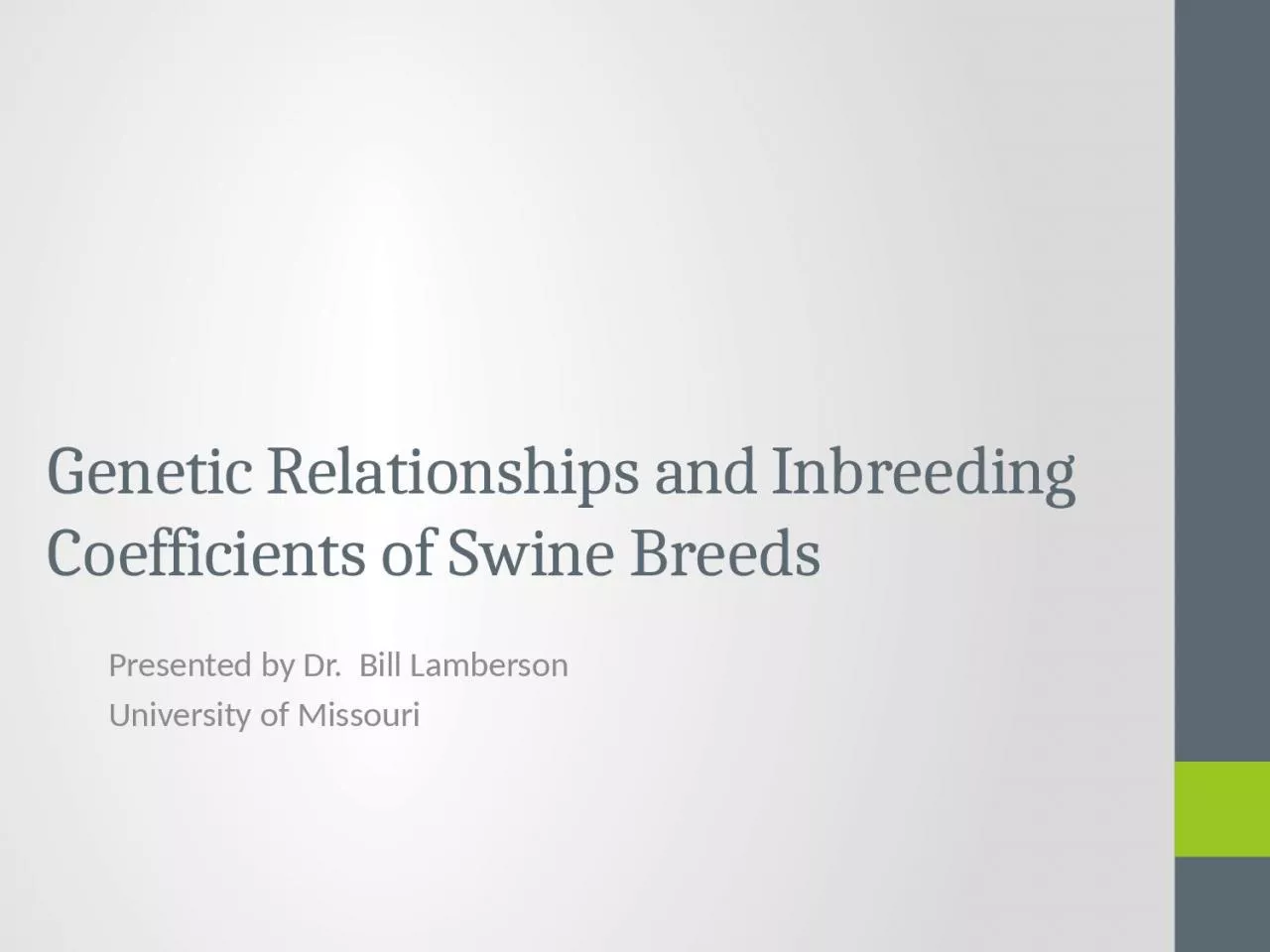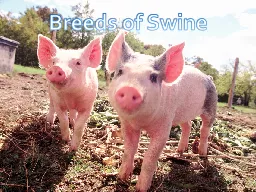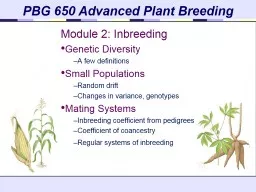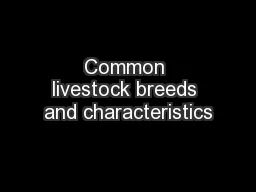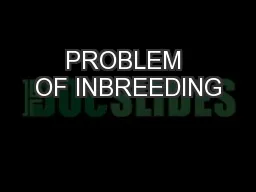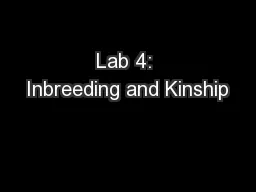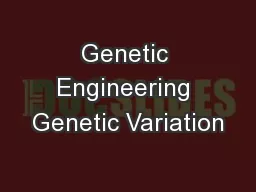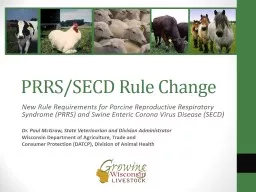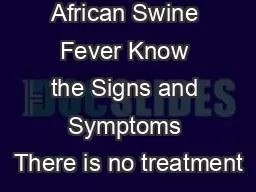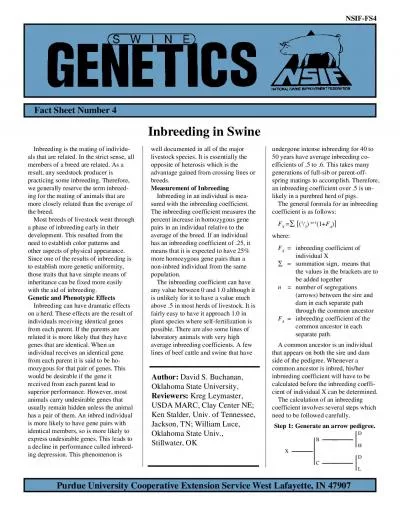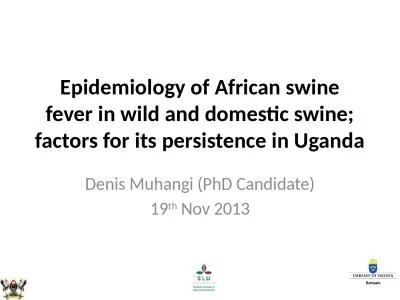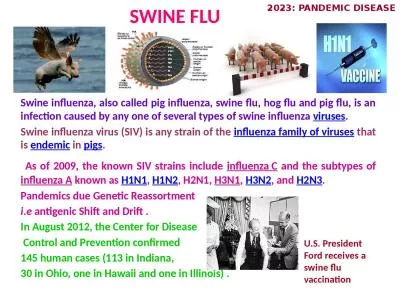PPT-Genetic Relationships and Inbreeding Coefficients of Swine Breeds
Author : molly | Published Date : 2024-03-13
Presented by Dr Bill Lamberson University of Missouri Background Changes in the pork industry Vertical integration Use of limited number of breeds on a large
Presentation Embed Code
Download Presentation
Download Presentation The PPT/PDF document "Genetic Relationships and Inbreeding Coe..." is the property of its rightful owner. Permission is granted to download and print the materials on this website for personal, non-commercial use only, and to display it on your personal computer provided you do not modify the materials and that you retain all copyright notices contained in the materials. By downloading content from our website, you accept the terms of this agreement.
Genetic Relationships and Inbreeding Coefficients of Swine Breeds: Transcript
Download Rules Of Document
"Genetic Relationships and Inbreeding Coefficients of Swine Breeds"The content belongs to its owner. You may download and print it for personal use, without modification, and keep all copyright notices. By downloading, you agree to these terms.
Related Documents

